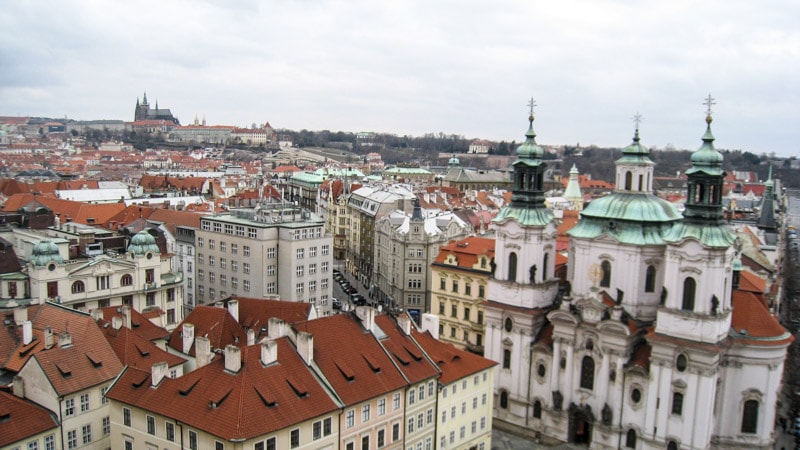
Prague is one of the great cities of Europe and the world.
Its rich history dates back over 1,000 years, shaped by empires, wars, and political movements. Since the fall of the communist regime after the Velvet Revolution in 1989, people from all around the world have begun rediscovering Eastern Europe and Prague.
If you will be visiting Prague, here are five free sights you must visit.
Table of Contents
Old Town Square
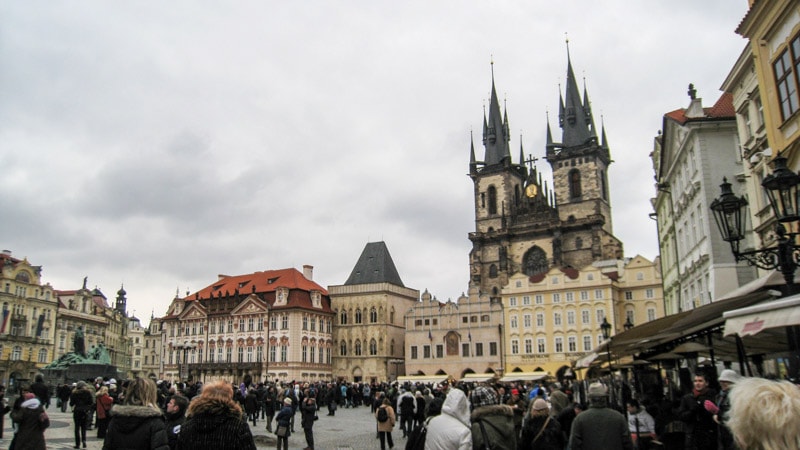
For those who visit Prague, the highlight of the city is the Old Town Square. Touristy yes. Beautiful, absolutely.
The market square dates back to the 11th century. In the 13th century, the Town Hall was constructed here. Since then, the square has been the centerpiece of the Old Town.
Here’s a feel good story. On this spot on June 21, 1621, 27 Protestant nobles, burghers, and knights were executed by beheading after they revolted against the Catholic Habsburgs. In their honor, twenty seven crosses were embedded into the ground near the base of the Old Town Hall tower.
At the center of the square is a memorial to Jan Hus. The memorial, which was erected in 1915, was built to honor Hus who was burned at the stake on July 6, 1415 (another feel food story).
Charles Bridge
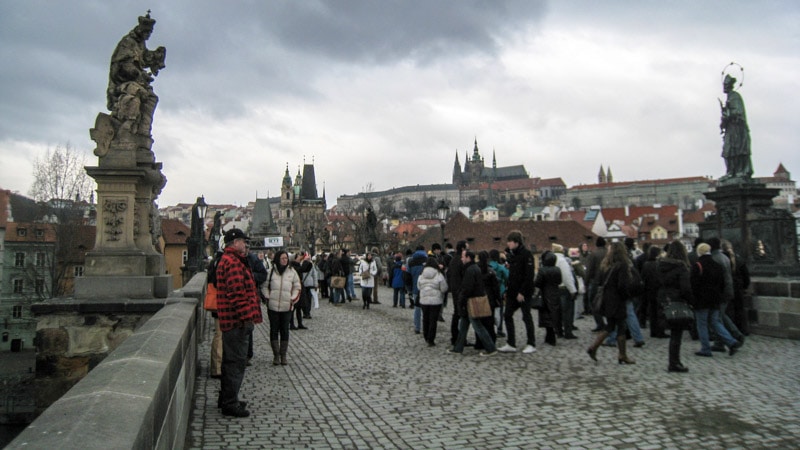
The pedestrian only Charles Bridge, spanning the Vltava River, was first constructed in 1357 under the orders of King Charles IV. According to legend, the first brick was laid by Charles IV himself at 5:31am on July 9, 1357.
This was not the first bridge at this location. The Judith Bridge, built in 1158, was located here until it was destroyed by a flood in 1342.
The bridge was an important connection between the Old Town and Prague Castle. Before 1841, this bridge was the only connection across the Vltava River.
Before 1870, the bridge was known as Stone Bridge or Prague Bridge.
The views from the bridge of the surrounding area are stunning. For one of the best walks in the city, start at one end of the bridge near the Old Town and walk across all 1,500 feet (300 meters) of the bridge towards the Little Quarter on the opposite side.
As you make your way down the bridge, notice the 30 baroque-style statues. These statues are replicas of those originally erected in the 18th century.
Today, Charles Bridge is considered one of the most beautiful Gothic style bridges in the world.
Wenceslas Square
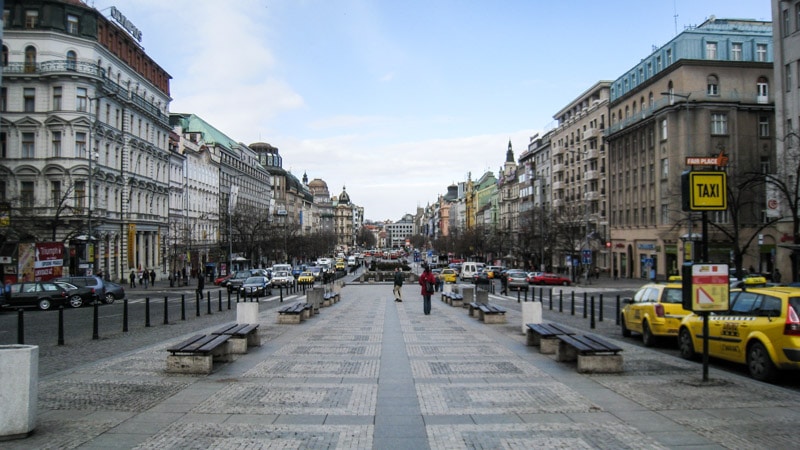
Not far from the tourist packed streets and squares of the Old Town is the modern and urban New Town. The Old Town might get all the attention from tourists, but the nearby New Town is where you will find the locals of Prague going about their daily lives.
Ironically, the New Town is not so new. It was founded in 1348 by Charles IV.
At the center of the New Town is Wenceslas Square, named after the patron saint of Bohemia, Saint Wenceslas.
During the Middle Ages, a horse market was located here. It was known then as the Horse Market. The square was renamed Wenceslas Square in 1848.
The square is actually more of a long and narrow boulevard packed with traffic. Running down the center of the 2,460 foot (750 meter) square is a pedestrian friendly green area.
The square has been at the center of many protests and demonstrations over the years.
During World War II, the Nazis used the square for mass demonstrations. In 1969, Czech student Jan Palach lit himself on fire to protest the Soviet Union and their invasion of Czechoslovakia. In 1989, during Velvet Revolution, hundreds of thousands of citizens gathered at Wenceslas Square to protest and mark the end of the Communist rule in Czechoslovakia.
Prague Astronomical Clock
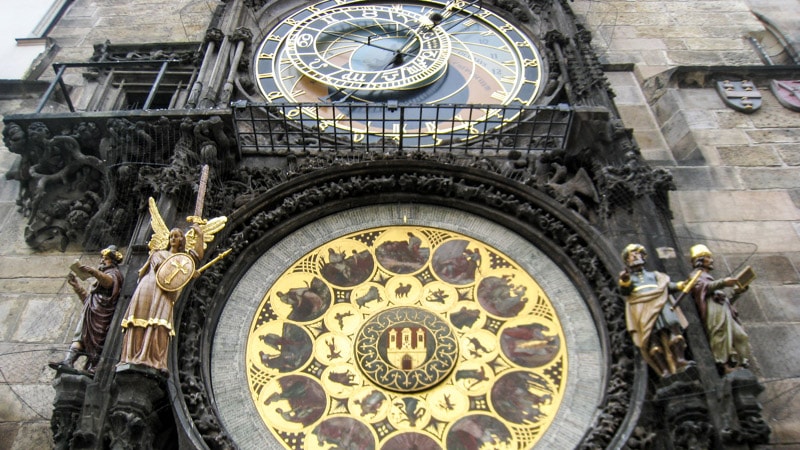
Head on over to the side of the Town Hall to see the Prague Astronomical Clock.
The oldest parts of the clock date back to 1410.
The clock actually keeps track of multiple versions of time. The two outer rings show the hour. One in Bohemian time (gold Gothic numbers) and modern time (Roman numerals).
The clock also keeps track of sunrise and sunset. The big hand tracks the sunrise while the little hand tracks the sunset.
At the bottom, is a golden circle which was installed in the 19th century. The circle depicts the zodiac signs, scenes for the life of a peasant, and a ring of the names of saints, one for everyday.
If you visit at the top of each hour, you can view four animated figures that appear around the clock. The first figure, looking into a mirror, symbolizes vanity. Another figure holds a bag of gold, symbolizing greed. The figure of a Turk symbolizes pleasure. The last figure is of a skeleton with an hourglass in hand which symbolizes that your time on earth is limited.
The clock strikes at the top of each hour from 8:00am to 9:00pm (8:00pm in the winter).
St. Vitus Cathedral
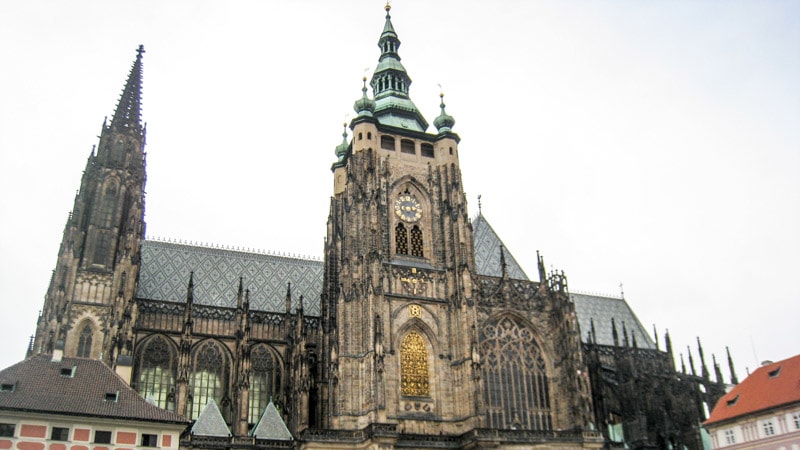
Inside the walls of the Gothic St. Vitus Cathedral are the tombs of Habsburg kings, Holy Roman Emperors, and local saints. The cathedral is located inside Prague Castle, one of the largest castles in the world.
In total, there have been three cathedrals built at this location with the first dating back to 930. The present day church seen today dates back to 1344. All three of the cathedrals were dedicated to St. Vitus.
The two towers rise up 270 feet above the ground.
Just under the large round window are men in suits carved into stone. These men were the architects and builders of the cathedral who finished the job in 1929. In total, it took around 585 years to complete the church thanks in part to wars, political movements, reforms, and plagues.
St. Vitus Cathedral is very popular with tourists. If you can, arrive at the cathedral when it opens at 9:00am (noon on Sunday) for the least amount of crowds.
Last Updated on April 8, 2024
Related Posts